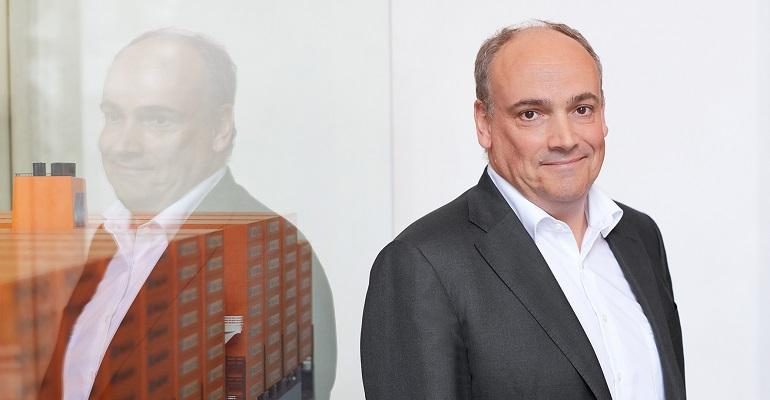Hapag-Lloyd CEO Rolf Habben Jansen said the collapse in freight rates last year was “not logical” as demand and utilisation held up and the company handled 11.9 million teu, almost exactly the same as 2022.
However, revenues per teu virtually halved last year compared to the previous year’s results, seeing liner shipping returns crash during the 2023 with little hope of any respite over the next couple of years, according to Jansen.
Carrier’s freight rate bubble was punctured as a combination of sliding demand and a steadily increasing capacity supply saw average rates per teu tumble from $2,863 in 2022 to $1,500 per teu.
Revenues were also practically halved from $36.3 billion to $19.2 billion resulting in an EBIT of just $2.7 billion down $15.6 billion on the previous year.
An upside for Hapag-Lloyd is that the carrier managed to stay in the black as results from the Asian carrier Yang Ming saw returns almost wiped out and Zim descended into negative territory.
Yang Ming recorded a 97% year-on-year decline in net profits to $149.1 million while Zim saw a net loss of $2.6 billion, compared to a profit of $4.6 billion net profit a year earlier, as Zim’s average rate tumbled from $3,240 to $1,203 per teu.
Janesen said there had been a good start to the year for the company, but “The market fundamentals for the next couple of years are weak”.
The continued delivery of new capacity and softening demand will mean that returns will remain low.
The Hapag-Lloyd CEO added that while the diversion of vessels around the African Cape had absorbed excess capacity, there were not enough ships to maintain schedules, consequently vessels were steaming faster, increasing fuel consumption and costs and further increasing emissions and EU ETS costs.
“Last year we reduced our carbon emissions for the first time by 800,000 tonnes,” said Jansen, the Red Sea crisis and subsequent diversions, however, will likely mean that 2024 will see these emissions increase again at least in the short-term.
Jansen also ruled out the possibility of Hapag-Lloyd following Maersk’s strategy of becoming an integrator of the seas, saying that the company’s Pureplay Plus strategy to improve its inland deliveries would be maintained in an effort to improve its on time deliveries.
Hapag-Lloyd accepts that Maersk, with its declared strategy of developing its logistics business, and is actively looking to buy DB Schenker, this is not a path that the German carrier expects to follow.
According to Jansen Hapag-Lloyd is looking to improve its scheduling by controlling the supply chain better, including through the Gemini Cooperation’s stated strategy of routing as many services as possible through the carriers’ own terminals, and using dedicated shuttles, of around 6,000 teu each to deliver cargo to a few ports, possibly as little as two ports, to help maintain timetables.
Copyright © 2024. All rights reserved. Seatrade, a trading name of Informa Markets (UK) Limited.
Add Seatrade Maritime News to your Google News feed.  |

